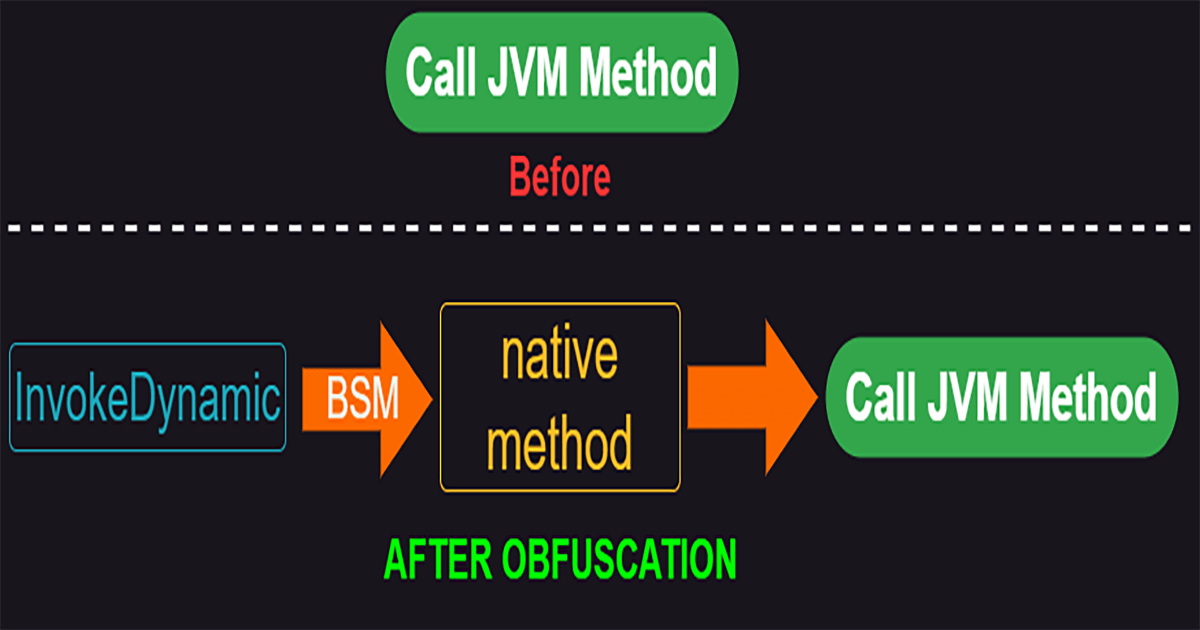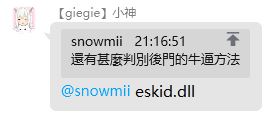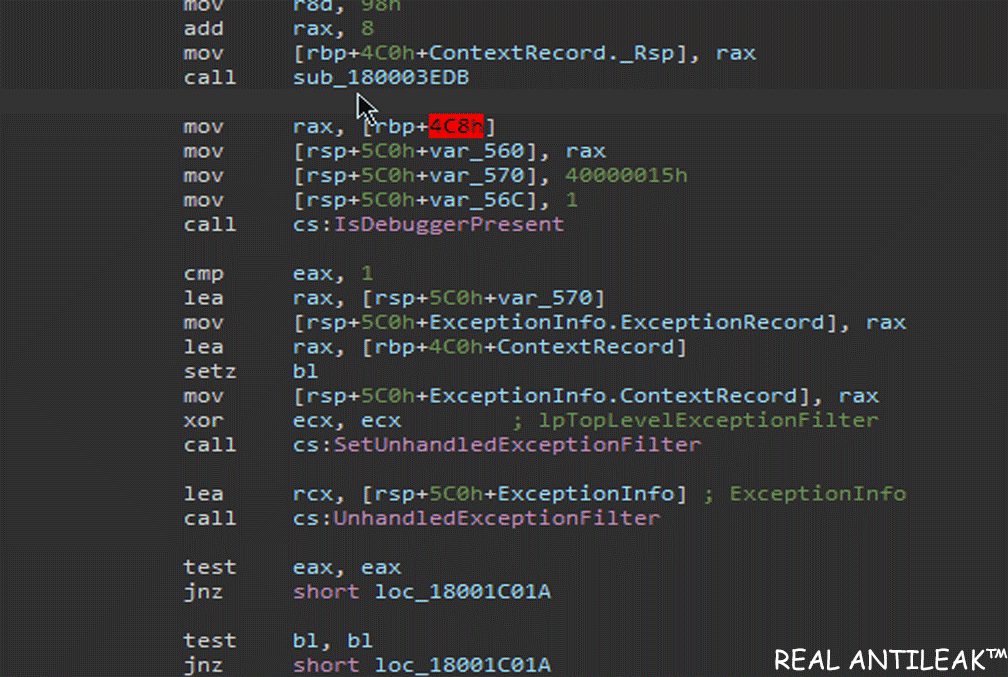Disclaimer
The following pseudocode snippets are heavily beautified. You may not be able to instantly recognize some of these parts; lots of junk code and algorithms are unrolled. But that doesn’t really matter, as when you finish reading about this kind of protection, you will have a field day breaking it (=
Intro
In the last article we deobfuscated the Indys and reveal the “real invocation”, in this post we will focus on analyzing both the related bytecode and the DLL to reveal the truth.
Basic Information About The DLL
| Name | |
|---|---|
| Arch | x86_64 |
| Compiler | Visual C/C++(19.00.30034)[C++] |
| Packed? | NO |
| Virus Detection | NO(Using Virus-Total & Intezer) |
DLL loading process
With the indy-deobfuscated sample, we are now able to analyze the clinit method of the class ESKID and find out how the DLL is loaded.
1.OS identification
The DLL loading process starts by trying to get system properties to determine the type of your operating system and grab the proper OS-specific DLL.
This is an abstract of their implementation:
1
2
3
4
5
6
7
8
9
10
11
12
13
String osType = System.getProperty("os.name").toLowerCase();
InputStream inStream = null;
if (osType.contains("win")) {
inStream = ESKID.class.getResourceAsStream("/eskid.dll");
}
if (osType.contains("mac")) {
inStream = ESKID.class.getResourceAsStream("/mac.dat");
}
if (osType.contains("nux")) {
inStream = ESKID.class.getResourceAsStream("/unix.dat");
}
However, its cross-platform functionality is actually deformed because of the absence of the DLL file mac.dat and unix.dat .
2.Extracting and loading
Because of some technical restrictions, the DLLs in the jar could not be loaded directly.
Thus it’s necessary to extract the DLL as a temporary file before loading it.
1
2
3
4
5
6
7
8
9
10
11
File tempDllFile = File.createTempFile("eskidontop", ".dat");
FileOutputStream outStream = new FileOutputStream(tempDllFile);
byte[] buffer = new byte[2048];
int read;
while ((read = inStream.read(buffer)) != -1){
outStream.write(buffer, 0, read);
}
inStream.close();
outStream.close();
tempDllFile.deleteOnExit();
System.load(tempDllFile.getAbsolutePath());
All the pseudocode above are in the class
ESKID.
Diving into the DLL
In an attempt to learn more about the native methods in the DLL, we analysed some of the other methods under the package com/loader/epsilon.
To our surprise, most of the invocations were pointed to the native methods. So it’s time to analyse the DLL.
Thunk function
We choose the native method Java_ESKID_AwUlqtUfLk for our initial analyze.
The IDA has already marked this function as thunk function because it only has a single jmp instruction.
3 suspicious string arguments
Then we followed the jump to the function Java_ESKID_AwUlqtUfLk_0 :
1
2
3
4
5
6
7
8
9
10
11
12
13
14
15
16
.text:0000000180009EC0 Java_ESKID_AwUlqtUfLk_0 proc near ; CODE XREF: Java_ESKID_AwUlqtUfLk↑j
.text:0000000180009EC0 ; DATA XREF: .pdata:00000001800AA0B4↓o
.text:0000000180009EC0
.text:0000000180009EC0 var_18 = qword ptr -18h
.text:0000000180009EC0
.text:0000000180009EC0 sub rsp, 38h
.text:0000000180009EC4 mov [rsp+38h+var_18], r8
.text:0000000180009EC9 lea r9, aLjavaLangStrin ; "(Ljava/lang/String;)Ljava/lang/String;"
.text:0000000180009ED0 lea r8, aC_0 ; "c"
.text:0000000180009ED7 lea rdx, aComLoaderEpsil_6 ; "com/loader/epsilon/$$$$$$$$ESKID$$$$$$$"...
.text:0000000180009EDE call j_eCallStaticObjectMethodV
.text:0000000180009EDE
.text:0000000180009EE3 add rsp, 38h
.text:0000000180009EE7 retn
.text:0000000180009EE7
.text:0000000180009EE7 Java_ESKID_AwUlqtUfLk_0 endp
Subsequently we can observe 3 strings as arguments for the single call.
We can assume that these plain strings are class name, method name and signature.
Another Thunk Function
In turn we seek to the function j_CallStaticObjectMethod which turns out to be another thunk function which jumps to the function CallStaticObjectMethod .
Inlined JNI function
The pseudocode of the function looks like this:
1
2
3
4
5
6
7
8
9
10
11
jobject CallStaticObjectMethod(JNIEnv_ *env, const char *className, const char *methodName, const char *signature, ...)
{
struct _jobject *clazz; // rbx
struct _jmethodID *methodID; // rax
va_list args; // [rsp+70h] [rbp+28h] BYREF
va_start(args, signature);
clazz = env->functions->FindClass(&env->functions, className);
methodID = env->functions->GetStaticMethodID(&env->functions, clazz, methodName, signature);
return Env->functions->CallStaticObjectMethodV(&env->functions, clazz, methodID, args);
}
From this pseudocode we can recognize this function as an inlined JNI function(source: jni.h#L1351) and its role is assisting developers to call JNI methods comfortably.
Conclusion
The functionalities of all the native methods are the same: they were used for making invocations to the JVM methods.
The whole life-cycle of the obfuscated JVM method invocations can be summarize as the graph below:
In JVM layer, the invocations were hidden by the invokedynamic instruction and its invocation to the JNI method will be resolved during runtime.
Finally the JNI functions in the DLL invoke the real target java method.
Gathering data for further deobfuscation
In order to recover the real call, we need to gather all the information about the actual calls from the JNI functions.
So we can write an IDApython script for this task. Download link: gen_proxy_info.py
YOU NEED TO ADD JNI STRUCTURE IN IDA FIRST TO RUN THIS SCRIPT!
We started first by filtering out JNI functions, IDA’s powerful auto-rename feature has already skipped the first thuck function for us, so we can just pick the functions which end with _0 :
1
2
3
4
for func in Functions():
# filter out non-native methods
if re.match(r"Java_ESKID_(.*)_0", get_func_name(func)) == None:
continue
Then we extract the target clazz, method, signature from the lea*3 pattern:
1
2
3
4
5
6
7
8
9
10
11
12
13
14
15
16
17
leaList = list(
filter(lambda addr: print_insn_mnem(addr) == "lea", list(FuncItems(func)))
)
if len(leaList) != 3:
print(
"[ERROR] native method %s doesn't match lea*3 pattern!"
% (get_func_name(func))
)
continue
for leaAddr in leaList:
string = str(get_strlit_contents(get_operand_value(leaAddr, 1)).decode())
if re.match(r"\((.*)\)(.*)", string) != None:
sig = string
elif string.find("/") != -1:
clazz = string
else:
method = string
Now the JNI function is about to call the JNI-helper function to invoke the real target jvm method.
However there’s another thuck function which blocks our way, so we have to grab the address of the thunk function first:
1
2
3
4
5
6
7
8
9
10
11
12
13
14
15
16
17
18
19
20
21
22
callThunk = list(
filter(
lambda addr: print_insn_mnem(addr) == "call"
or print_insn_mnem(addr) == "jmp",
list(FuncItems(func)),
)
)
if len(callThunk) != 1:
print(
"[ERROR] could not find JMP/CALL thunk function in native method %s"
% (get_func_name(func))
)
continue
thunkFuncAddr = get_operand_value(callThunk[0], 0)
# check whether the thunk function has JMP to the inlined JNI function
if print_insn_mnem(thunkFuncAddr) != "jmp":
print(
"[ERROR] thunk function %s doesn't have jmp to the inlined JNI function!"
% (get_func_name(func))
)
continue
Due to the thunk function address is actually the jmp instruction’s address, we can extract JNI calls from the helper function in ease:
1
2
3
4
5
6
7
8
9
10
JniHelperFuncItems = FuncItems(get_operand_value(thunkFuncAddr, 0))
JNIcalls = list(
filter(lambda addr: print_insn_mnem(addr) == "call", list(JniHelperFuncItems))
)
if len(JNIcalls) != 3:
print(
"[ERROR] Inlined JNI function %s doesn't match JNI-call*3 pattern!"
% (get_func_name(func))
)
continue
For the invocation types, we can easily determine them by their JNI function names:
1
2
3
4
5
6
JNIstrucID = get_struc_id("JNINativeInterface_")
JniMemberName = str(get_member_name(JNIstrucID, get_operand_value(JNIcalls[2], 0)))
if JniMemberName.find("Static") != -1:
invokeType = "static"
else:
invokeType = "virtual"
Finally, dump the data to a json object:
1
2
3
4
5
6
7
8
9
proxyMethod = re.match(r"Java_ESKID_(.*)_0", get_func_name(func)).group(1) #name of the native method in JVM
proxy_call_infos += {
proxyMethod: {
"clazz": clazz,
"method": method,
"signature": sig,
"type": invokeType
}
}
Below is a small part of the result file – proxy_info.json :
1
2
3
4
5
6
7
8
9
10
11
12
13
14
15
16
17
18
19
20
21
{
"AEuZjfSlxs": {
"clazz": "javax/crypto/Cipher",
"method": "init",
"signature": "(ILjava/security/Key;)V",
"type": "virtual"
},
"AJrdsSKYPD": {
"clazz": "kotlin/io/ByteStreamsKt",
"method": "readBytes",
"signature": "(Ljava/io/InputStream;)[B",
"type": "static"
},
"AKOjFEenlj": {
"clazz": "com/loader/epsilon/$$$$$$$$ESKID$$$$$$$$$f",
"method": "e",
"signature": "(Ljava/lang/String;)Ljava/lang/String;",
"type": "static"
},
...
}
Winner winner chicken dinner
With the data we extracted, we can write another custom transformer to deobfuscate them automatically.
The deobfuscation process is like the diagram below:
Here’s the source code: JniProxyTransformer.java
YOU NEED TO ADD Gson DEPENDENCY FIRST TO RUN THIS TRANSFORMER!!
The only thing we want to highlight is how we determine whether the invocation type is INVOKEINTERFACE.
Actually the workaround is simple, we can just grab the target clazz’s classNode from the classpath and get that from its access property:
1
2
3
4
5
6
int opcode;
if (classpath.get(proxyInfo.get("clazz")).access == Opcodes.ACC_INTERFACE) {
opcode = Opcodes.INVOKEINTERFACE;
} else {
opcode = Opcodes.INVOKEVIRTUAL;
}
We can combine part1 and part2 together to form a complete graph:
Memes
The DLL has backdoor:
@smallshen hijacked our PCs using his POWERFUL AntiLeak:







